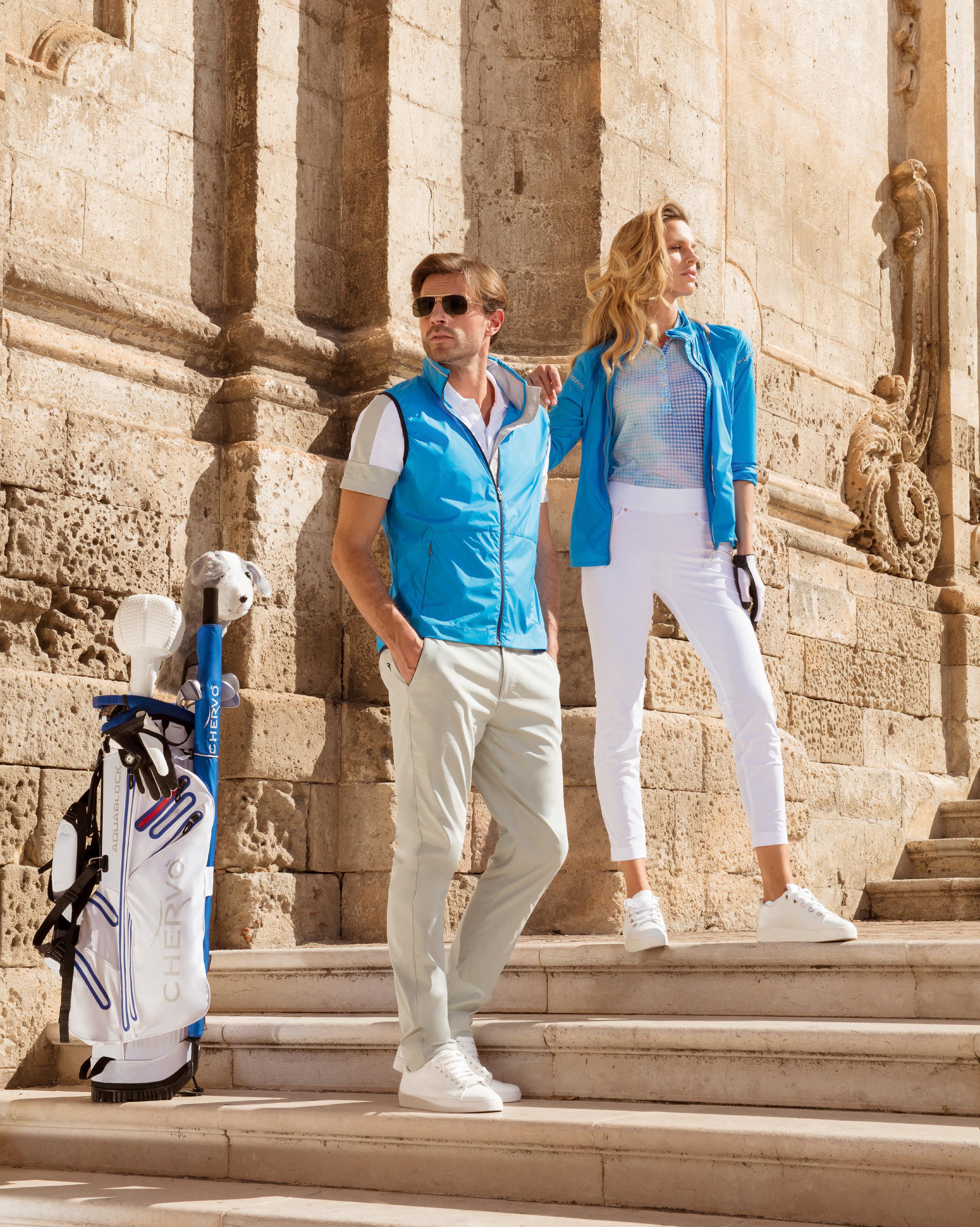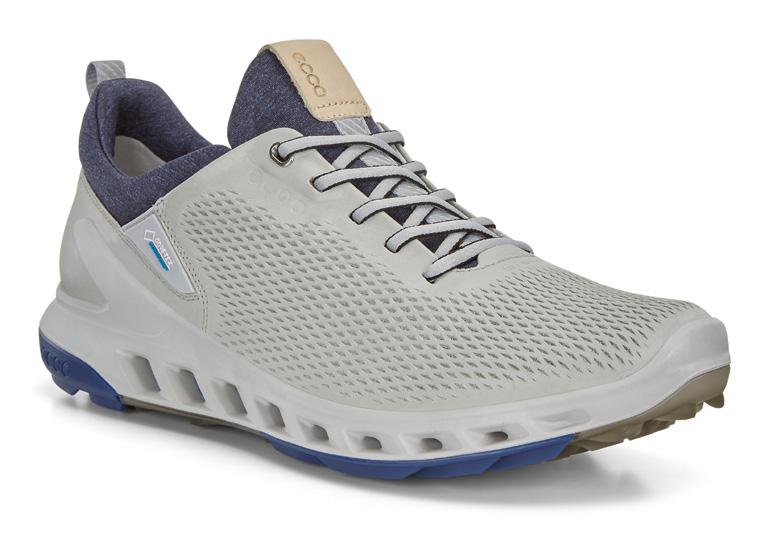
7 minute read
Walk this way Every golfer wants to have the best gear for the game and golf shoes are no exception
from Upswing spring 2020
by Upswing
WALK THIS WAY

Advertisement
The golf shoe has come a long way since the mid-1800s when gentleman hammered nails into the leather soles of their boots to improve traction and prevent slippage. It was a clever idea at the time, but there was often a cry of ‘ouch’ as nails would become loose, move upwards and pierce into golfers’ feet. Needless to say, the introduction of screw-in metal spikes in the late 1800s was welcome progress.
Words Alison Root
In the 1920s Spalding introduced the saddle Oxford shoe that was originally designed for racquet sports players. However, it was golfers that embraced the classic two-toned leather shoe and Gene Sarazen, one of the world’s top golfers during this period, first wore a pair. It wasn’t until the 1950s that the saddle shoe became immensely popular with men, women and teenagers, and even to this day its distinctive design is synonymous with golf fashion.
During the decades that followed, the clickety-clack sound of replaceable metal spikes on pathways meant that golfers were hardly seen before they were heard. Still, with growing concerns about the damage metal spikes were causing to the greens, they were generally on their way out by the late 1990s and replaceable plastic cleats took their place.
FootJoy, the official shoe for the American Ryder Cup team in 1927, is a company that dominated the golf shoe market for a number of years and it was the go-to brand for anyone starting out in golf. FootJoy is still a leading

ECCO BIOM G3 combines low-to-the-ground stability with a glove-like fit. Uncompromising traction is provided through ZARMA-TOUR spikes, while the BOA performance fit system allows for a customisable fit. RRP: £225 (men) £210 (women)
brand with the most counts on the PGA tour, but over the last twenty years or so, companies like ECCO, PUMA, adidas, Duca del Cosma and Skechers have made their mark on what is now a hugely competitive business.
Danish brand ECCO has over 50 years of experience designing and manufacturing premium footwear and it was in 1996 that the company launched its first golf shoe. One of the biggest golf shoe revolutions came in 2010 when Fred Couples wore a pair of non-traditional golf shoes, ECCO’s Golf Street, en route to a stunning Masters finish. Without realising, the laid-back American launched the next generation of golf shoes – the hybrid.
There has since been an explosion of the athletic-looking hybrid shoe, which is ideal for today’s fast-moving lifestyles. The irreplaceable moulded rubber dimples or so-called nubs on the sole provide stability and traction, and there are plenty of fun and fashionable men and women’s styles to choose from. To name just a few brands: last year ECCO launched the S-Lite, the lightest hybrid the company has ever made; FootJoy introduced a new FJ Flex category of hybrid shoes, while PUMA offered enhanced spikeless performance with its IGNITE NXT collection.
Professional and amateur golfers alike recognise the comfort and convenience of spikeless shoes, as they can be worn straight from home, to the course, to carpeted areas in the clubhouse and beyond. Nevertheless, a common question is: Should I wear spiked or spikeless shoes?
Indeed, spikeless shoes are generally most suited to firm and dry conditions during spring and summer months, whereas spiked shoes are likely to provide more lateral stability overall than spikeless in soft and wet conditions, or when playing on a particularly hilly golf course.
Therefore, golfers might want to rotate two pairs of shoes depending on weather conditions and the type of course they regularly play. That said, the continual advancements in traction design and durability means that nowadays many golfers are satisfied with the performance of the latest spikeless shoes year-round, so perhaps as we look to the future, replaceable cleats could well become a thing of the past.
The outsole is just one feature of a golf shoe, and as companies continue to push the boundaries of golf shoe innovation, there are several other elements that play a vital role to provide golfers with the greatest comfort and enhance performance.
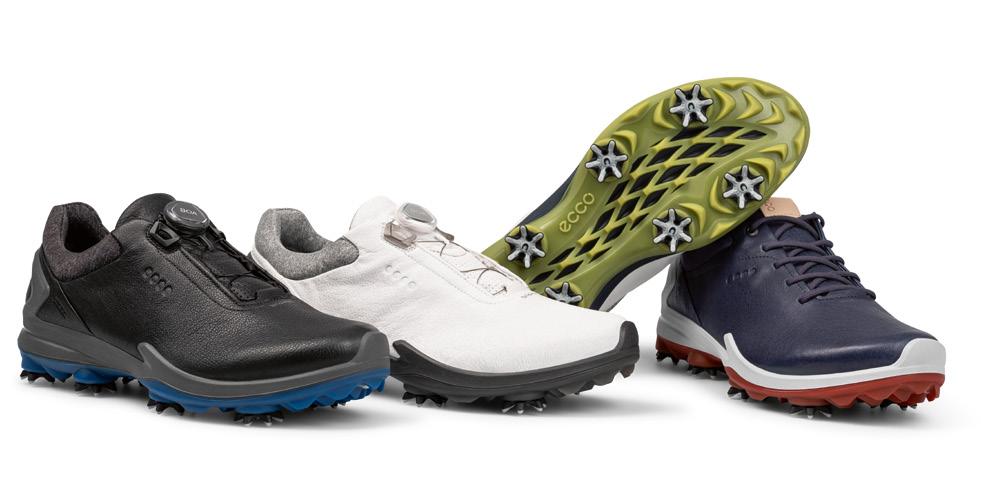
It’s essential to keep your feet warm and dry to focus on the shot in hand rather than the prospect of wet feet and ultimately an unpleasant round. It was back in 1989 that FootJoy launched the first waterproof shoe – DryJoys - and it is now the longestrunning performance golf shoe franchise in the world.

ECCO, PUMA, adidas and Under Armour, are a few brands that have collaborated with Gore, the leader in long-lasting waterproof protection, by incorporating the 100% waterproof GORE-TEX membrane between a shoe’s upper and lining. Skechers is proud of its own H2GO Shield waterproof protection technology, and similarly, a key feature of Duca del Cosma shoes is their waterproof Bootie System. The good news is that most come with a waterproof guarantee.
To coin a phrase, they fit like a glove, is what golfers are hoping for - straight out of the box for 18 holes. Happily, this has largely become the norm and instant comfort is achieved through an array of fascinating technological developments.
For example, ECCO incorporates its highly respected NATURAL MOTION technology, which allows the foot to move naturally. Through its ZONAL FLUIDFORM technology, a moulded midsole ensures the right balance of cushioning and stability exactly where golfers need it. Duca Del Cosma’s breathable and anti-bacterial ARNEFLEX memory foam insole is designed to keep feet fresh and comfortable; FootJoy’s TruFit system includes an inner fit sleeve to provide a snug and secure fit along with a custom fit bed generated by Ortholites Impressions; the Forgefiber technology from adidas utilises TPU-coated yarn that helps improve stability in areas of the upper when stitched at various angles and in layers, while PUMA’s foam midsole that’s incorporated for added
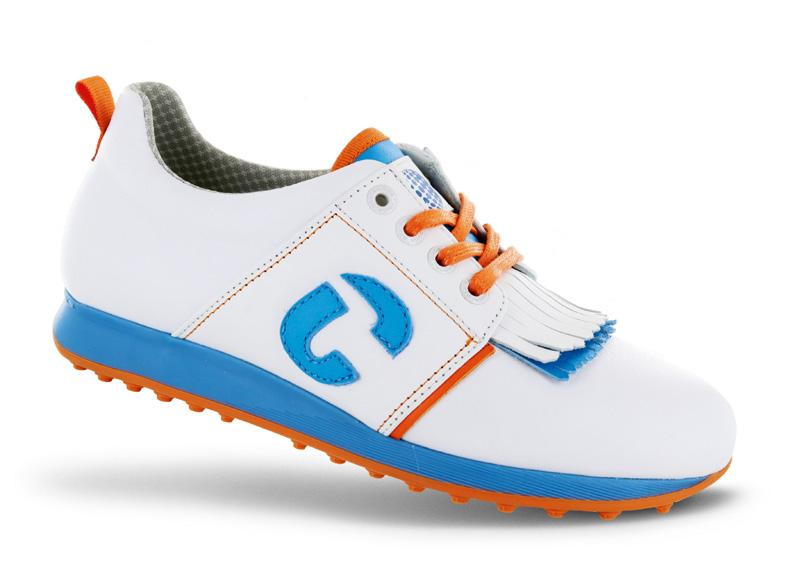
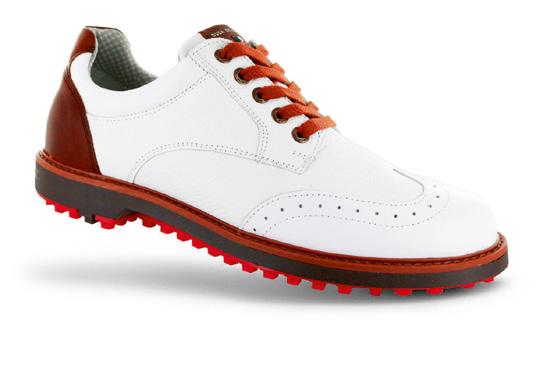
ECCO’s S-LITE hybrid shoe which breaks boundaries as the lightest leather shoe ECCO has ever made: lightweight two-tone YAK leather uppers, lined with a soft textile, and with a groundbreaking E-DTS LITE outsole. RRP: £160 (men) £150 (women)

comfort also has the benefit of being wrapped in SOLESHIELD, a microthin film that’s vacuumformed to make cleaning off dirt and debris a breeze.
Last but not least, golf shoe styling has come on leaps and bounds and with a variety of designs and colours; there are shoes to suit every outfit and personality that transfer effortlessly to the current off-course sneaker and trainer trend.
It’s a popular fashion that encouraged US lifestyle company
Skechers to enter the golf market less than a decade ago. This year the fast-growing brand, shoe sponsor of the 2019 European
Solheim Cup team, is extending its men’s and women’s range to juniors and also expanding shoe widths and sizes to help golfers find the perfect fit.
Likewise, in 2004 husband and wife team Baldovino and Antje Elle-Mattiazzo applied their design and fashion skills to establish Duca del Cosma, creating a collection of cross-over shoes that are suitable for sports and business. The ultra-fashionable designs are bold and eye-catching, bringing Italian dolce vita to the fairways.
Remember that your feet are the basis of your swing so the quality of your shoes can make a significant difference. Whether you prefer spikes or spikeless, traditional two-tone or metallic-looking leather uppers, slip-ons, different coloured laces, or a BOA dial-in to fit fastening system, today’s golfers are spoilt for choice.
The only comparison with the boots worn by the gentlemen in the 1800s is that it seems like the golf shoe market has nailed it!
Duca del Cosma’s Vogue golf shoes for women is made from nappa leather with reptile patent leather effect. It features a breathable internal bootie system with a memory foam leather insole, ensuring your feet will remain dry and comfortable on or off the golf course. RRP: £179.95


